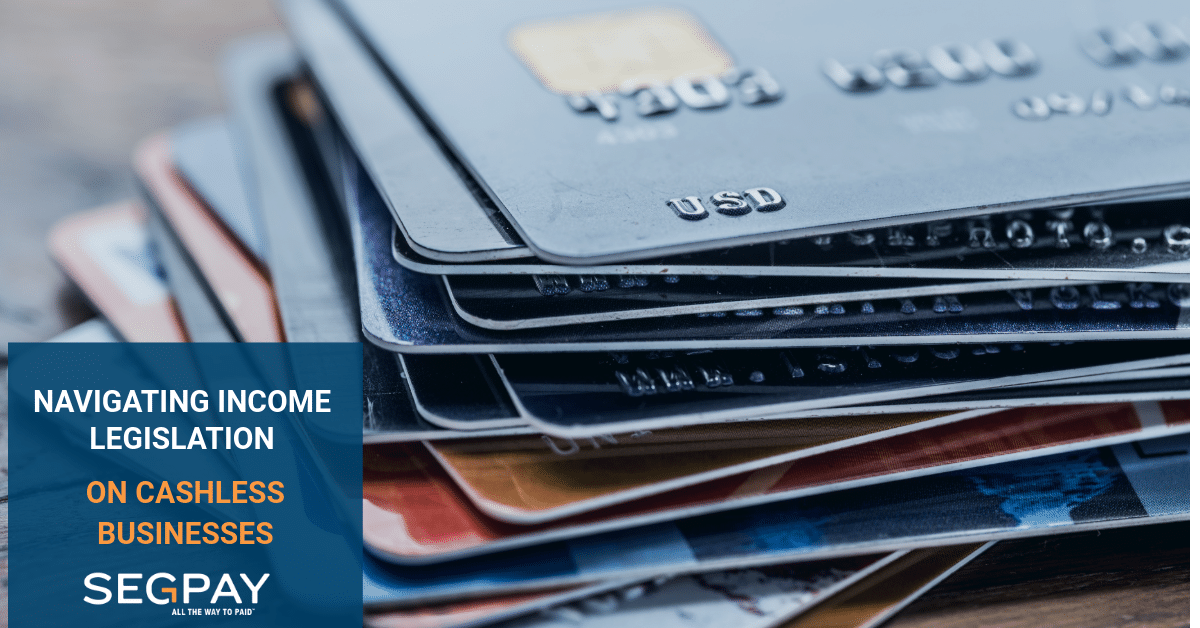Key Takeaways
√ Over 50% of transactions are made via digital or mobile payment systems.
√ The U.S. has enacted legislation banning refusal to accept money for any transaction.
√ Key challenges to a cashless society include unbanked and underbanked people groups, access to digital technology, and legislation prohibiting the exclusion of cash transactions.
- 6 minute read
The propensity towards a cashless society has increased widely in the past decade. Over half of all offline and online transactions are now made through digital or mobile payment systems, which have become famous through services like PayPal, Apple Pay, and Venmo.
Conversely, opposition to this development is also rising among consumer advocacy groups and legislators who believe this practice discriminates against 25% of the U.S. non-banked population. In major cities across the U.S., such as Atlanta, legislation has been enacted banning refusal to accept money for any transaction. This growing negative response changes perceptions about the practicality and inclusiveness of going cashless.
Understanding Cashless Payments
Cashless payments are those that do not involve exchanging physical cash. Western Union money transfers in the 1800s marked the beginning of cashless transactions. However, electronic ones expanded fast from the late 20th century through the use of credit and debit cards to PayPal web payments and tap-and-go smartphone applications like Apple Pay and Google Wallet today.
As more commerce has shifted online and debit cards have surpassed cash for in-person spending, cashless payments now account for most transactions in many developed economies.
Methods of Payment
The most common cashless payment methods today include:
- Credit cards – Allow consumers to make purchases on credit provided by the card issuer. Popular options include Visa, Mastercard, American Express, and store credit cards.
- Debit cards – Draw directly from the cardholder’s bank account when used. They have grown significantly in use, surpassing cash and checks.
- Digital wallets—Allow storage of debit/credit cards for tap or contactless payments. Leading options are Apple Pay, Google Pay, and Samsung Pay.
- Bank transfers—Money moved electronically between bank accounts. Includes wire transfers, ACH payments, and direct deposits.
- Mobile payments—Use smartphone apps to send/receive money. Venmo and Zelle are popular person-to-person apps.
- Cryptocurrencies—Digital currencies like Bitcoin allow electronic payments on blockchain networks. Still, this niche is growing in adoption.
- Loyalty/rewards cards—Provide incentives and perks for consumers to pay digitally and build brand loyalty.
Cashless Payment Advantages and Disadvantages
Several factors come into play when choosing between cash vs cashless payment options. Deciding which works best requires you to examine each option keenl
Advantages of Cashless Payment
There are several critical benefits of cashless payment often cited in favor of transitioning to a cashless economy:
Extra security
Electronic payments like credit cards or mobile wallets can be traced, and fraudulent charges can be disputed, discouraging theft. They also cannot be counterfeited like paper currency. In Missouri, a study conducted by American and German researchers reported a decrease of 9.8% in crime after replacing cash welfare benefits with Electronic Benefit Transfer (EBT) cards.
Faster checkout & economic velocity
Digital transactions take seconds compared to counting out cash and change, speeding up lines and service in stores. Economists also argue that money moves faster through electronic circulation rather than transporting and storing paper bills and coins. This added velocity stimulates economic growth.
Appeals to cashless businesses
Many shops, restaurants, and e-commerce sites prefer cashless payment systems to reduce accounting hassles, eliminate employee theft opportunities, and save on armored transport costs. Banning cashless policies infringes on their freedom to reduce business operation costs and risks how they choose. Profit margins can increase by nearly 3 percent on average.
Hygiene concerns
COVID accelerated calls for touchless payments to avoid virus transmission from potentially contaminated cash and coins. 76% of U.S. consumers now view handling cash as unsanitary. Public health arguments increasingly discourage paper currency usage.
Incentivizes consumer spending
Robust credit card rewards programs with sign-up bonuses, cashback, and travel perks have motivated 63% higher spending among U.S. cardholders compared to cash buyers, according to Federal Reserve research.
Provides customer insights
The wealth of data collected on buying habits through digital payments helps merchants better understand consumers and personalize promotions to encourage more sales. Anonymous cash makes this crucial marketing analytics impossible.
Cashless Payment Cons
However, some significant downsides to shifting away from cash remain:
Financial exclusion
Roughly 22 million Americans are unbanked without an account or credit card, mainly lower-income minorities and undocumented immigrants. Dependence on cashless transactions excludes the unbanked from crucial services.
Privacy concerns
Centrally collected records on every credit/debit purchase allow private companies and governments to surveil consumer behavior and target them without consent. Cash anonymity avoids tracking.
Inconvenient for some banking histories
Past financial or clerical mistakes can still haunt consumers, making it difficult to open and maintain the necessary bank accounts for digital payments despite recent progress. Fines can rack up quickly.
Harder budgeting
The psychological effect of literally seeing decreasing cash makes it easier for many to follow and limit budgets. Studies show cashless buyers spend up to twice as much as unbudgeted digital sales.
Service reliability issues
Network outages or software glitches can freeze entire checkout systems, denying service. Given the complete reliance on digital processing continuity in a cashless infrastructure, such tech failures become more catastrophic.
Exclusionary for undocumented and unhoused
Unhoused and undocumented people already struggle immensely to access mainstream financial services, so requiring electronic payments compounds their hardship and inability to receive vital goods and services.
Ongoing credit card fees
While cashless is more convenient for consumers, most businesses must pay a nearly 3 percent credit card processing fee on payments, which can still hurt slim profit margins, especially on cheap everyday basics. Small minimum client fees remain an issue as well.
Trends and Demographics Influencing the Change to Cashless Payments.
The most preferred payment method in the USA is the debit card, which has surpassed cash. Younger individuals mainly adopt digital payments because they are familiar with e-commerce and money transfer apps on their mobile phones.
Over 70% of Gen Z and millennials reported using payment methods like PayPal, Venmo, or Square Cash in 2022. In contrast, 75% of baby boomers and older prefer using cash. Bridging this demographic gap in adoption remains challenging as the world shifts online.
Challenges to a Cashless Society
Amidst growing backlash, proposals for an entirely cashless economy are looking less tenable over the next decade, given several key challenges:
- Financial inclusion—Bringing unbanked and underbanked groups into mainstream electronic payments needs to be faster and easier for nonprofit and government financial initiatives.
- Universal digital access—Reliable internet connectivity and smartphones have still not reached full ubiquity across socioeconomic lines, limiting full adoption potential.
- Regulations against exclusion—Legal cases brought against cashless businesses and new bills passed in a growing number of states and cities banning card-only policies reveal a legitimate public concern for financial discrimination against marginalized groups in a cashless economy.
More debates are arising around appropriate regulations to ensure digital payments evolve fairly with consumer protections, privacy safeguards, and financial access for all Americans regardless of income, credit history, or tech deficits. Getting this balance right remains crucial to determining the future culture of currency.
Conclusion
While cashless payments improve speed and convenience for many consumers, sole dependence on these channels risks excluding the financially vulnerable. Bans on cashless stores represent pushback against potential discrimination through a modern cashless payment system.
The growth of alternative banking options like Segpay provides more adaptable solutions tailored to America’s economically diverse population outside traditional credit systems. Achieving fair, secure, and inclusive money management remains crucial as currency continues to evolve in the 21st-century digital economy.
Want to learn more about Segpay?
Contact a Segpay professional today. Reach out to us with your questions at [email protected] and we can share more about the pros and cons of subscription model options.



